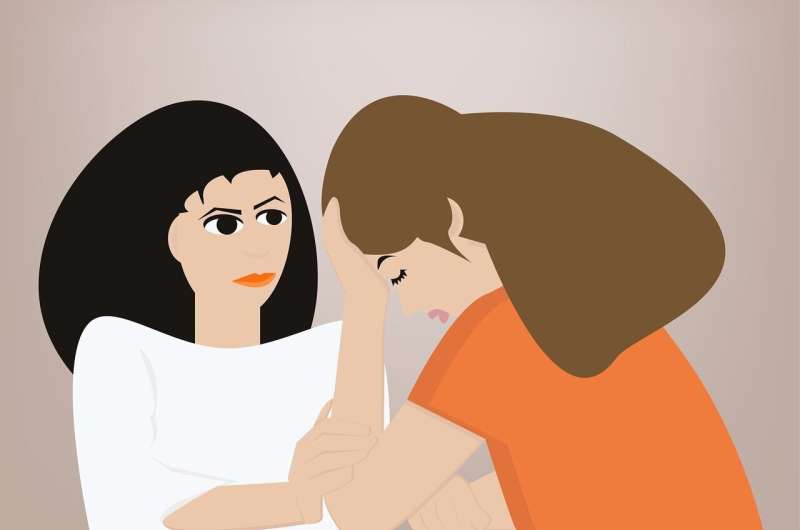Women had ‘alarmingly high rates’ of mental health problems during start of the pandemic

A study at the University of Chicago Medicine found U.S. women experienced increased incidence of health-related socioeconomic risks (HRSRs), such as food insecurity and interpersonal violence, early in the COVID-19 pandemic. This was associated with “alarmingly high rates” of mental health problems, including depression and anxiety. The research was published April 5 in the Journal of Women’s Health.
Other studies have found evidence for higher rates of anxiety and depression and related issues, such as alcohol overuse, connected to the pandemic—but this study is the first to link early pandemic-related changes in HRSRs to mental health effects in women.
“Most national surveys tend to report aggregated findings rather than stratifying by gender,” said Stacy Lindau, MD, Professor of Obstetrics and Gynecology and Medicine-Geriatrics at UChicago Medicine. “Those early studies gave us snapshots of the health and behaviors of the whole population, but gave us limited insight on women. Yet, women constitute the majority of the essential workforce, including healthcare workers, and we wanted to make sure that women’s experiences were being documented.”
The researchers conducted a survey of 3,200 U.S. women over the age of 18 between April 10 and 24, 2020. More than 40% of participants reported experiencing at least one HRSR during the prior year, which included issues such as food insecurity, housing instability, difficulties with their utilities, transportation challenges and interpersonal violence; 22% reported experiencing two or more HRSRs during the year before the pandemic.
But by the first spring of the pandemic, nearly half of all women—including 29% of those who did not experience pre-pandemic HRSRs—reported new (incident) or worsening HRSRs. The greatest challenge was an increase in food insecurity. Nearly 80% of those without pre-pandemic HRSRs who reported a new HRSR became food insecure. Almost a quarter experienced interpersonal violence.
“It’s incredible and concerning that nearly half of women—including more than a quarter of those who had no health-related socioeconomic risks—had experienced incident or worsening conditions,” said Lindau. “It’s even more striking that more than a quarter of the women who had none of these risks in January or February 2020 now had at least one by April. That points to the likelihood that a large portion of women were already near the edge of vulnerability. When the world shut down, transportation became more difficult, food access became harder, and very soon after the crisis began, many women found themselves struggling to meet basic needs.”
Those who experienced socioeconomic risks prior to the pandemic also experienced the greatest increase in insecurity. Three-quarters of women with pre-pandemic HRSRs experienced new or worsening risks during the early pandemic; 38% experienced two or more, with more than half experiencing increased food insecurity.
Significantly, the survey also found that 29% of women reported symptoms of depression and anxiety—nearly twice the estimated pre-pandemic rates. One in six women screened positive for symptoms of post-traumatic stress, a rate similar to that seen after other significant disasters, such as the SARS and Ebola epidemics. Those who experienced at least one new or worsening HRSR were at significantly higher risk of experiencing anxiety and post-traumatic stress.
“Given very high rates of these problems, we’re really concerned about the current capacity of our mental health system,” said co-author Marie Tobin, MD, Professor of Psychiatry at UChicago Medicine. “Women are principally responsible for parenting, family caregiving and other essential work—they are key to managing and recovering from this pandemic, and now are afflicted by very significant socioeconomic risk levels that appear to be drivers of anxiety, depression and traumatic stress. We should be especially concerned that socioeconomically vulnerable women are at high risk for developing pandemic-related psychiatric morbidity.”
These results, the investigators say, should help spur healthcare providers and policy makers to address the underlying and modifiable health-related socioeconomic risk factors in order to prevent these negative outcomes.
Source: Read Full Article
